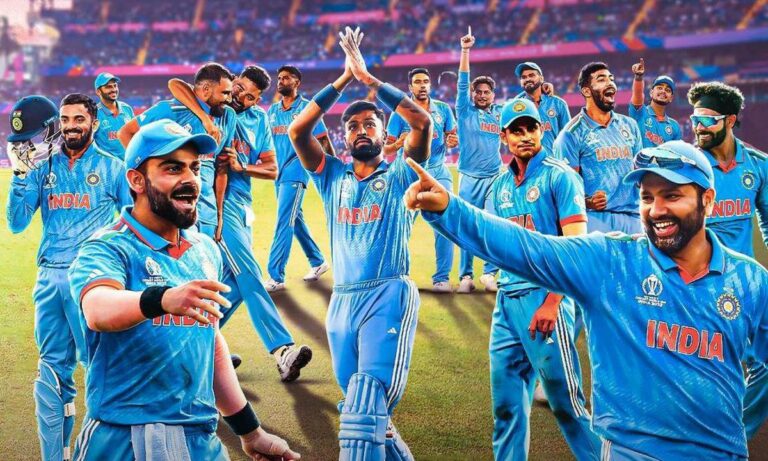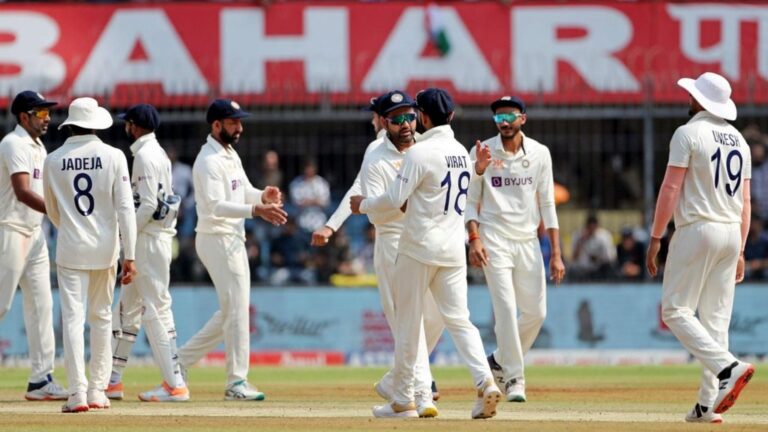Exploring Biodegradable Cricket Gear
Lotus365, Gold365: Biodegradable cricket gear offers a range of advantages that make it a sustainable choice for both players and the environment. One significant benefit is the reduction of plastic waste, as traditional cricket gear often contains non-biodegradable components that contribute to environmental pollution. By opting for biodegradable alternatives, players can actively participate in minimizing their carbon footprint and supporting eco-friendly practices.
In addition to its positive environmental impact, biodegradable cricket gear is also lightweight and durable, providing players with high-quality equipment that performs well on the field. This gear is designed to meet the same standards of performance and comfort as traditional gear, ensuring that players can focus on their game without compromising on quality. Furthermore, the use of biodegradable materials in cricket gear promotes a shift towards sustainability in the sports industry, setting a positive example for other sporting disciplines to follow suit.
Impact of Traditional Cricket Gear on the Environment
Traditional cricket gear, commonly made of materials like plastic, leather, and non-biodegradable foam, poses a significant threat to the environment due to its non-recyclable nature. The production and disposal of these items contribute to pollution and the depletion of natural resources, making them unsustainable choices for cricket enthusiasts and professionals alike.
Moreover, the use of traditional cricket gear often results in a large carbon footprint, with the manufacturing process generating greenhouse gas emissions and other harmful byproducts. As these items deteriorate over time or are simply discarded, they can leach toxic substances into the environment, further exacerbating the ecological impact of the cricket industry.
Materials Used in Biodegradable Cricket Gear
Biodegradable cricket gear is designed to minimize its impact on the environment by incorporating eco-friendly materials that can naturally decompose. These materials often include biodegradable plastics, organic fibers, and recycled materials. By utilizing such sustainable resources, manufacturers are able to create cricket gear that reduces the carbon footprint of the sport while still maintaining high performance standards. With a focus on durability and functionality, biodegradable cricket gear is not only environmentally conscious, but also provides players with quality equipment that meets their needs on the field.
Durability of Biodegradable Cricket Gear
While there may have been initial concerns about the durability of biodegradable cricket gear compared to traditional options, advancements in technology have significantly improved the longevity of eco-friendly equipment. Manufacturers have been able to enhance the strength and wear resistance of biodegradable materials, ensuring that they can withstand the rigors of cricket matches and practice sessions. Athletes using biodegradable gear have reported that the performance and durability are on par with conventional cricket equipment, without compromising on quality.
Moreover, the durability of biodegradable cricket gear is not only beneficial for players but also for the environment. By choosing eco-friendly options that last longer, athletes can reduce the frequency with which they need to replace their gear, thereby decreasing the amount of waste generated. This sustainable approach to cricket equipment not only minimizes the impact on the environment but also contributes to a more ethical and responsible sporting industry.
Cost Comparison between Biodegradable and Traditional Cricket Gear
Biodegradable cricket gear has been gaining popularity among environmentally conscious players and teams due to its eco-friendly nature. While the initial cost of purchasing biodegradable gear may be slightly higher compared to traditional gear, the long-term savings and environmental benefits outweigh the upfront expense. In the long run, biodegradable cricket gear can be a cost-effective option as it reduces the need for frequent replacements and minimizes the negative impact on the environment.
Alternatively, traditional cricket gear is typically made from non-biodegradable materials such as plastics and synthetic fibers, which can contribute to environmental pollution and waste accumulation. The cheaper price of traditional gear may seem attractive initially, but the hidden costs associated with disposal and environmental degradation should be considered. In comparison, investing in biodegradable cricket gear not only aligns with sustainability goals but also offers a more sustainable and economically viable option for cricket enthusiasts in the long term.
Companies Offering Biodegradable Cricket Gear
Among the notable companies leading the charge in providing biodegradable cricket gear is EcoSport. With a commitment to sustainability, EcoSport offers a range of environmentally-friendly cricket equipment that meets the performance standards expected by players of all levels. Their innovative approach to crafting biodegradable gear has gained recognition for promoting eco-conscious practices within the sporting community.
Another key player in the market for biodegradable cricket gear is GreenBat. Known for their high-quality and durable products, GreenBat has made significant strides in developing gear that reduces the environmental impact typically associated with traditional cricket equipment. By prioritizing sustainability without compromising on performance, GreenBat has established itself as a reputable choice for players seeking eco-friendly alternatives.
Steps to Properly Dispose of Biodegradable Cricket Gear
When it comes to properly disposing of biodegradable cricket gear, it is essential to follow the guidelines provided by the manufacturer. Typically, biodegradable cricket gear can be composted in designated facilities that handle organic waste. By ensuring that the gear is disposed of in the correct manner, you can contribute to reducing environmental impact and promote sustainability within the cricket industry.
Before disposing of biodegradable cricket gear, make sure to remove any non-biodegradable components such as zippers or labels. Separating these items will help facilitate the decomposition process of the biodegradable materials. Additionally, it is recommended to reach out to local waste management authorities to inquire about specific recycling programs or facilities that accept biodegradable sports gear. By taking these simple steps, you can play a part in promoting eco-friendly practices in the world of cricket.
Biodegradable Cricket Gear Innovations
In recent years, the cricket industry has seen a surge in innovation with the development of biodegradable cricket gear. Companies are increasingly focusing on creating eco-friendly equipment that minimizes the environmental impact of the sport. One of the latest innovations in biodegradable cricket gear is the use of plant-based materials such as bamboo and jute for manufacturing bats, pads, and gloves. These materials not only offer a sustainable alternative to traditional gear but also provide similar performance and durability.
Another notable innovation in biodegradable cricket gear is the introduction of water-based and organic dyes for coloring equipment. This move away from synthetic dyes not only reduces the harmful chemicals released during production but also ensures that the gear is safe for both players and the environment. Additionally, advancements in technology have resulted in the creation of biodegradable cricket balls made from natural rubber and cork, further increasing the sustainability of the sport. These innovations highlight the growing commitment of the cricket industry towards environmental responsibility and sustainable practices.
User Reviews of Biodegradable Cricket Gear
The user reviews of biodegradable cricket gear have been overwhelmingly positive, with many players praising the eco-friendly aspects of the equipment. Players appreciate the reduced environmental impact and feel good knowing that they are using gear that is biodegradable and sustainable. In addition, customers have noted that the biodegradable gear is just as durable and high-quality as traditional cricket gear, dispelling any concerns about performance.
Players have also highlighted the comfort and fit of biodegradable cricket gear, noting that it is lightweight and breathable, allowing for better performance on the field. Many users have mentioned that they feel good about using gear that aligns with their values of sustainability and environmental consciousness. Overall, the user reviews of biodegradable cricket gear showcase a positive reception from players who are looking for both high-performance equipment and environmentally friendly options.
Future of Biodegradable Cricket Gear in the Cricket Industry
Biodegradable cricket gear has steadily gained traction in the cricket industry as players and manufacturers increasingly prioritize sustainability. With a growing awareness of environmental issues, many cricket enthusiasts are choosing biodegradable gear to reduce their carbon footprint. The future of biodegradable cricket gear looks promising as more companies invest in research and development to improve the quality and performance of eco-friendly equipment.
As the demand for sustainable sports products continues to rise, it is expected that biodegradable cricket gear will become more mainstream in the cricket industry. Manufacturers are exploring innovative materials and manufacturing techniques to create durable and eco-friendly gear that meets the standards of professional players. With ongoing advancements in technology and increasing consumer awareness, biodegradable cricket gear is poised to become a staple in the cricket industry, aligning with the global push towards a greener future.
What are the benefits of using biodegradable cricket gear?
Biodegradable cricket gear helps reduce the environmental impact of traditional gear by breaking down naturally over time. It also promotes sustainability and eco-friendliness in the cricket industry.
What materials are used in biodegradable cricket gear?
Biodegradable cricket gear is typically made from natural materials such as bamboo, recycled plastic, and other bio-based materials that are designed to decompose without harming the environment.
How durable is biodegradable cricket gear compared to traditional gear?
Biodegradable cricket gear is designed to be just as durable and long-lasting as traditional gear, ensuring that players can rely on their equipment while also being environmentally conscious.
How does the cost of biodegradable cricket gear compare to traditional gear?
While biodegradable cricket gear may initially have a higher cost, the long-term benefits of sustainability and environmental impact make it a worthwhile investment for players and teams.
Are there companies currently offering biodegradable cricket gear?
Yes, there are several companies in the market that offer biodegradable cricket gear, providing players with eco-friendly options for their equipment needs.
How can users properly dispose of biodegradable cricket gear?
Users can dispose of biodegradable cricket gear by following the manufacturer’s instructions for recycling or composting, ensuring that the gear breaks down naturally without causing harm to the environment.
What innovations are being made in biodegradable cricket gear?
Innovations in biodegradable cricket gear include advancements in materials technology, design improvements for performance, and increased awareness of sustainability practices in the cricket industry.
What do users think of biodegradable cricket gear?
User reviews of biodegradable cricket gear have been positive, with players appreciating the environmentally friendly options and the durability and performance of the gear.
What is the future of biodegradable cricket gear in the cricket industry?
The future of biodegradable cricket gear looks promising, as more players and teams are becoming aware of the environmental impact of traditional gear and are seeking sustainable alternatives for their equipment needs.







